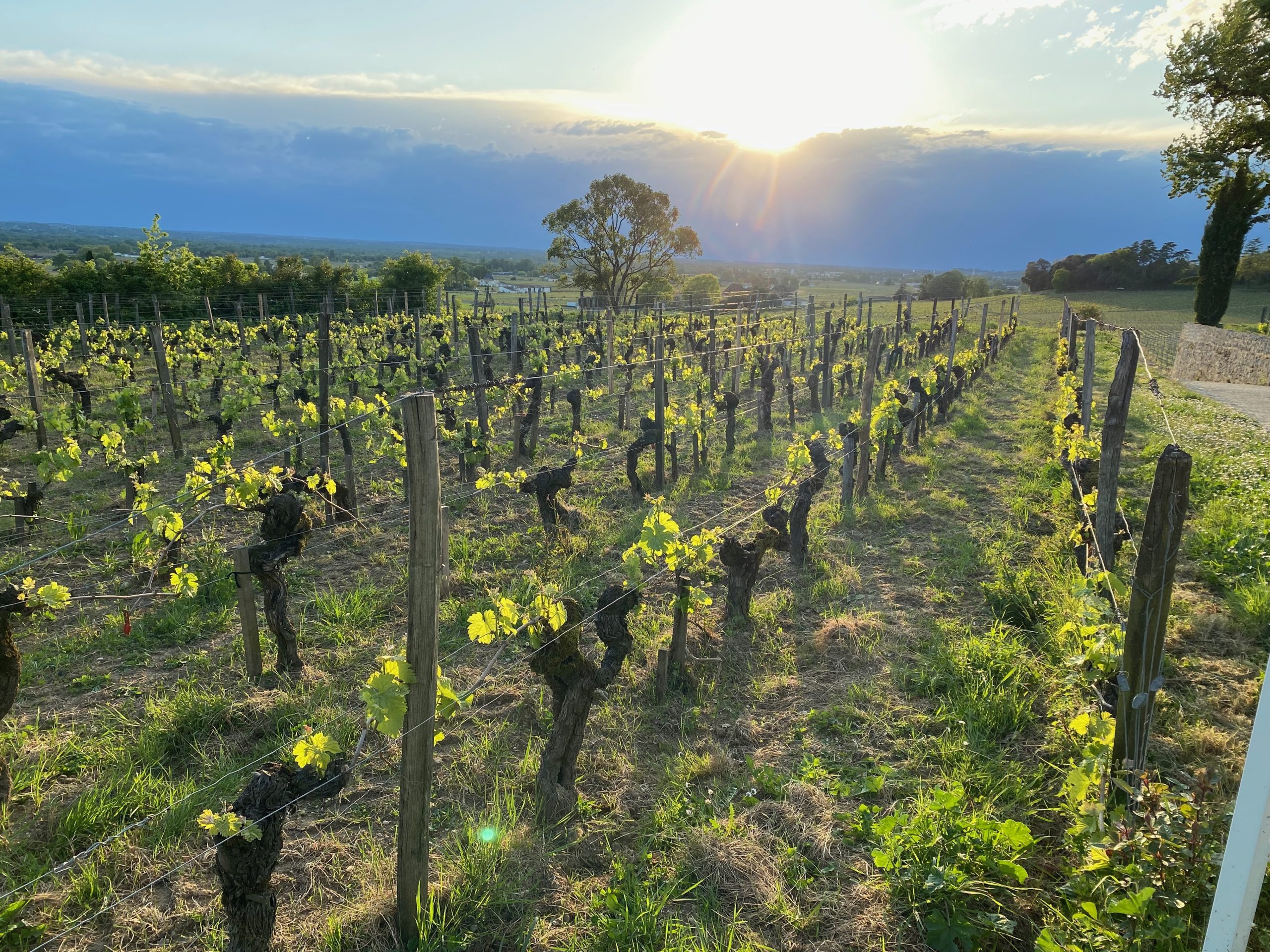One of the most influential figures in fine wine, May de Lencquesaing has celebrated her 100th birthday, a milestone commemorated with the release of the 2020 vintage of Glenelly's flagship Bordeaux-style blend, Lady May.

The wine is described as "embodying the precision, power, and elegance that define” the legendary May’s approach to wine and her legacy of “100 Years of grit and grandeur”, which included 30 years at the helm of Pauillac winery Château Pichon Longueville Comtesse de Lalande.
“More than just a vintage, it is a tribute to a lifetime dedicated to the pursuit of excellence,” the company said.
The daughter of Edouard Miailhe, May de Lencquesaing was born in 1925, into one of Bordeaux’s most established wine families, whose ties to the trade stretched back to the 18th century. However, despite her father and uncle’s ownership and shares in some of the Médoc’s most notable estates, including Châteaux Pichon Lalande, Palmer, Siran, Dauzac, and Coufran, Bordeaux in the 1930s was a region in crisis, having been crippled by the Great Depression, with “legendary vintages like 1928 and 1929 [reduced] to a fraction of their true worth”.
Within ten years, Bordeaux was under Nazi occupation, but the family’s resistance led them to shelter two Jewish families at Château Palmer. When the estate was later seized by German forces, Edouard and his brother undertaking a high-risk escape to Argentina via Bayonne to Argentina, when de
Lencquesaing was a teenager.
These wartime events helped form her wider outlook and leadership in wine, or enduring, adapting and rebuilding.
It wasn't until she inherited the estate in 1978 in her fifties, however, that de Lencquesaing came into her own in the male-dominated wine trade, modernising the "financially fragile" Pichon Lalande, restructuring its winemaking practices, and introducing a higher percentage of Merlot into the traditionally Cabernet-driven wines, which though controversial, set her blends apart from those of the neighbouring Pauillac estates.
The 1982 and 1983 vintages, for example became regarded as among the finest produced and among Bordeaux’s most collectible wines. By the 1990s, the château had become a benchmark Super Second, with wines that rivalled First Growths in both quality and pricing.
Her next move surprised many - at the age of 78, in 2003, she bought the 123-hectare former fruit farm Glenelly Estate in Stellenbosch on the slopes of Simonsberg Mountain, and started to produce Cape blends from Bordeaux varieties.
 Stellenbosch
Stellenbosch
The move came following de Lencquesaing's visit to the fledgling wine nation in the mid-1990s with wine critic Michael Fridjhon, where she recognised the granite-rich soils and maritime influence of Stellenbosch as bearing striking similarities to Bordeaux.
"Dr Anton Rupert once told me, ‘If you're going to invest in South Africa, it must be Stellenbosch.’ I didn’t come here to replicate Bordeaux. I came to write a new chapter in a different soil, with the same values, but a different voice," de Lencquesaing said.
After selling Pichon-Lalande to Louis Roederer in 2007, she planted Cabernet Sauvignon, Merlot, Petit Verdot, and Cabernet Franc, in order to craft wines that would age, with structure, and finesse.
Lady May 2020
"If ever there was a vintage that mirrored de Lencquesaing resilience, it was 2020", the company noted.

The 2020 vintage saw a growing season defined by extremes of prolonged drought, erratic temperatures, and harvest complications due to restrictions imposed by Covid 19 lockdowns. However, the now 20-year old vines delivered fruit "of exceptional intensity and structure", the company said. Winemaker Dirk van Zyl described the Lady May 2020 as "one of the most intricate wines to come out of the cellar" - a Cabernet Sauvignon-led wine "with increased Cabernet Franc for aromatic lift, Petit Verdot for depth, and Merlot for mid-palate roundness", which has been aged for two years in French oak and three years in bottle - "a Gran Reserva-style aging philosophy, an approach rarely seen in South Africa".

 The wine is described as "embodying the precision, power, and elegance that define” the legendary May’s approach to wine and her legacy of “100 Years of grit and grandeur”, which included 30 years at the helm of Pauillac winery Château Pichon Longueville Comtesse de Lalande.
“More than just a vintage, it is a tribute to a lifetime dedicated to the pursuit of excellence,” the company said.
The daughter of Edouard Miailhe, May de Lencquesaing was born in 1925, into one of Bordeaux’s most established wine families, whose ties to the trade stretched back to the 18th century. However, despite her father and uncle’s ownership and shares in some of the Médoc’s most notable estates, including Châteaux Pichon Lalande, Palmer, Siran, Dauzac, and Coufran, Bordeaux in the 1930s was a region in crisis, having been crippled by the Great Depression, with “legendary vintages like 1928 and 1929 [reduced] to a fraction of their true worth”.
Within ten years, Bordeaux was under Nazi occupation, but the family’s resistance led them to shelter two Jewish families at Château Palmer. When the estate was later seized by German forces, Edouard and his brother undertaking a high-risk escape to Argentina via Bayonne to Argentina, when de Lencquesaing was a teenager.
These wartime events helped form her wider outlook and leadership in wine, or enduring, adapting and rebuilding.
It wasn't until she inherited the estate in 1978 in her fifties, however, that de Lencquesaing came into her own in the male-dominated wine trade, modernising the "financially fragile" Pichon Lalande, restructuring its winemaking practices, and introducing a higher percentage of Merlot into the traditionally Cabernet-driven wines, which though controversial, set her blends apart from those of the neighbouring Pauillac estates.
The 1982 and 1983 vintages, for example became regarded as among the finest produced and among Bordeaux’s most collectible wines. By the 1990s, the château had become a benchmark Super Second, with wines that rivalled First Growths in both quality and pricing.
Her next move surprised many - at the age of 78, in 2003, she bought the 123-hectare former fruit farm Glenelly Estate in Stellenbosch on the slopes of Simonsberg Mountain, and started to produce Cape blends from Bordeaux varieties.
The wine is described as "embodying the precision, power, and elegance that define” the legendary May’s approach to wine and her legacy of “100 Years of grit and grandeur”, which included 30 years at the helm of Pauillac winery Château Pichon Longueville Comtesse de Lalande.
“More than just a vintage, it is a tribute to a lifetime dedicated to the pursuit of excellence,” the company said.
The daughter of Edouard Miailhe, May de Lencquesaing was born in 1925, into one of Bordeaux’s most established wine families, whose ties to the trade stretched back to the 18th century. However, despite her father and uncle’s ownership and shares in some of the Médoc’s most notable estates, including Châteaux Pichon Lalande, Palmer, Siran, Dauzac, and Coufran, Bordeaux in the 1930s was a region in crisis, having been crippled by the Great Depression, with “legendary vintages like 1928 and 1929 [reduced] to a fraction of their true worth”.
Within ten years, Bordeaux was under Nazi occupation, but the family’s resistance led them to shelter two Jewish families at Château Palmer. When the estate was later seized by German forces, Edouard and his brother undertaking a high-risk escape to Argentina via Bayonne to Argentina, when de Lencquesaing was a teenager.
These wartime events helped form her wider outlook and leadership in wine, or enduring, adapting and rebuilding.
It wasn't until she inherited the estate in 1978 in her fifties, however, that de Lencquesaing came into her own in the male-dominated wine trade, modernising the "financially fragile" Pichon Lalande, restructuring its winemaking practices, and introducing a higher percentage of Merlot into the traditionally Cabernet-driven wines, which though controversial, set her blends apart from those of the neighbouring Pauillac estates.
The 1982 and 1983 vintages, for example became regarded as among the finest produced and among Bordeaux’s most collectible wines. By the 1990s, the château had become a benchmark Super Second, with wines that rivalled First Growths in both quality and pricing.
Her next move surprised many - at the age of 78, in 2003, she bought the 123-hectare former fruit farm Glenelly Estate in Stellenbosch on the slopes of Simonsberg Mountain, and started to produce Cape blends from Bordeaux varieties.
 Stellenbosch
The move came following de Lencquesaing's visit to the fledgling wine nation in the mid-1990s with wine critic Michael Fridjhon, where she recognised the granite-rich soils and maritime influence of Stellenbosch as bearing striking similarities to Bordeaux.
"Dr Anton Rupert once told me, ‘If you're going to invest in South Africa, it must be Stellenbosch.’ I didn’t come here to replicate Bordeaux. I came to write a new chapter in a different soil, with the same values, but a different voice," de Lencquesaing said.
After selling Pichon-Lalande to Louis Roederer in 2007, she planted Cabernet Sauvignon, Merlot, Petit Verdot, and Cabernet Franc, in order to craft wines that would age, with structure, and finesse.
Lady May 2020
"If ever there was a vintage that mirrored de Lencquesaing resilience, it was 2020", the company noted.
Stellenbosch
The move came following de Lencquesaing's visit to the fledgling wine nation in the mid-1990s with wine critic Michael Fridjhon, where she recognised the granite-rich soils and maritime influence of Stellenbosch as bearing striking similarities to Bordeaux.
"Dr Anton Rupert once told me, ‘If you're going to invest in South Africa, it must be Stellenbosch.’ I didn’t come here to replicate Bordeaux. I came to write a new chapter in a different soil, with the same values, but a different voice," de Lencquesaing said.
After selling Pichon-Lalande to Louis Roederer in 2007, she planted Cabernet Sauvignon, Merlot, Petit Verdot, and Cabernet Franc, in order to craft wines that would age, with structure, and finesse.
Lady May 2020
"If ever there was a vintage that mirrored de Lencquesaing resilience, it was 2020", the company noted.
 The 2020 vintage saw a growing season defined by extremes of prolonged drought, erratic temperatures, and harvest complications due to restrictions imposed by Covid 19 lockdowns. However, the now 20-year old vines delivered fruit "of exceptional intensity and structure", the company said. Winemaker Dirk van Zyl described the Lady May 2020 as "one of the most intricate wines to come out of the cellar" - a Cabernet Sauvignon-led wine "with increased Cabernet Franc for aromatic lift, Petit Verdot for depth, and Merlot for mid-palate roundness", which has been aged for two years in French oak and three years in bottle - "a Gran Reserva-style aging philosophy, an approach rarely seen in South Africa".
The 2020 vintage saw a growing season defined by extremes of prolonged drought, erratic temperatures, and harvest complications due to restrictions imposed by Covid 19 lockdowns. However, the now 20-year old vines delivered fruit "of exceptional intensity and structure", the company said. Winemaker Dirk van Zyl described the Lady May 2020 as "one of the most intricate wines to come out of the cellar" - a Cabernet Sauvignon-led wine "with increased Cabernet Franc for aromatic lift, Petit Verdot for depth, and Merlot for mid-palate roundness", which has been aged for two years in French oak and three years in bottle - "a Gran Reserva-style aging philosophy, an approach rarely seen in South Africa".























































































































































